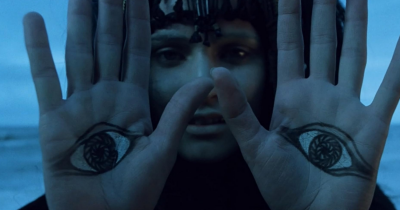Controversial Polish Sci-Fi Film Halted by Authorities Still Holds Perfect Rotten Tomatoes Score
By fypfeedz, BBC Culture, 30 June 2025
It’s rare to find films that were never finished to receive international acclaim. But the Polish science fiction thriller that was scuttled nearly fifty years before by the authorities of the state and partially destroyed, is considered to be among the greatest cinematic pieces of the time.
On the Silver Globe, the film The Silver Globe was directed by legendary Andrzej Zulawski. Although it was never completed and reserving a 100 score on the review website Rotten Tomatoes and has developed an cult following with cinephiles and film critics.
A grand vision is interrupted
Zulawski was a film director who became famous for his films like Possession (1981) and Fidelity (2000) and Fidelity (2000), began working in The Silver Globe in the mid-1970s. The film was based off the series of the first 20th Century novels known as the “Lunar Trilogy” written by his great-uncle Jerzy Zulawski.
His vision for the director was vast. In the midst of the worldwide excitement surrounding Star Wars, Zulawski’s work was a radically different style of science fiction. While George Lucas’s movie focused on the spectacle and adventure, On the Silver Globe focused on the concept of religion, philosophy as well as the nature and character of power.




The story follows a group of astronauts who take over the moon, and build an entirely new culture. The generations born onto the moon’s surface grow at a quick pace, resulting in a culture that is rooted in the mythology and ritual. Prior to his death, the final living astronaut records the history of the community and transmits the film out to Earth.
After a few years, a scientist by the name of Marek unhappy over an unfaithful marriage, goes to the moon, and is cast in the role of an unpopular messiah.
Political sensitivity
The filming started in 1976 and was ongoing for two years. The production required elaborate costumes, numerous desert locations, as well as a huge cast, including Andrzej Seweryn Jerzy Trela, and Grazyna Dylag. However, just as the production was nearing close to completion it was halted by The Polish Ministry of Culture ordered the project to be stopped.
The official explanation was “excessive expenditure”. But, the people involved believed the reason behind it was political. The Polish government of the time which was under communist system, was becoming cautious of artwork that appeared as a way to challenge the authority.
The narrative’s elements that depict oppressive hierarchy, prophetic figures and a world ruled by dogma — were seen by the government as an allegory for the Polish political situation.
“Poland didn’t have a private cinemas. It was a cinema owned by the state. The decree from our culture minister was the one that everyone followed. Stop means stop,” actor Andrzej Seweryn told when he spoke to Vice some years after. “We tried to protest, to sign a letter, but it was without any result.”
In the aftermath of the shutdown, huge portions of film negatives and film stock were destroyed by government orders, thus erasing years of work that was creative.
An unfinished masterpiece
Zulawski later left Poland and began working in the United States. After more than a decade Zulawski was invited return to Poland and was granted access to the remnants of the Silver Globe.
Determined to save this film from destruction, they came up with an unorthodox solution. The missing scenes were replaced with footage from the daily life of the 1980s Poland. Zulawski himself was the one to provide narration that explained what was to happen in the missing scenes.
The film premiered in 1988 at the Cannes Film Festival, where it was greeted with amazement. Reviewers praised its bold ambition, its unique structure, and haunting images. It was difficult to evaluate an unfinished film with such holes, some argued that when it was fractured, it was an impressive artistic accomplishment.
A reviewer said it was “a cinema of ruins — but ruins of such magnitude that they inspire awe rather than regret.”
Acclaim that lasts
Since the time, On the Silver Globe has gained its fame. The restored copies of the original footage have been shown at festivals and retrospectives. Viewers continue to debate about what Zulawski could have accomplished when his work was done without interference.
In Rotten Tomatoes, a platform that collects reviews of the film, it has an unheard-of 100 percent rating. Although the number of reviews is still relatively low in comparison to mainstream films, the unanimity of reviews reflects its lasting popularity.
For those who admire it, the attraction is in part due to the tragic story of its origins. “Even out of time, even incomplete, even now that its director is gone for good, On the Silver Globe endures,” one reviewer wrote. “Its beautiful power will never dim.”
A symbol of struggle for artistic expression
Beyond its artistic value Beyond its artistic merits, the film has become a symbol of the difficulties facing artists who work under the pressure of censorship. Zulawski’s experiences are among many instances of artistic visions that were thwarted by the political restrictions of Eastern Europe during the Cold War.
For some academics this film serves as an analogy for the state of Polish culture during the 1970s. The film was a bold, innovating, but susceptible to state repression.
Despite its fractured condition, In spite of its deterioration, Silver Globe remains one of the most talked about films throughout Polish the history of cinema. It’s also an ominous tale of loss of art as well as a celebration for the resilience as Zulawski’s broken masterpiece continues to captivate viewers nearly 50 years after its shut down.
















